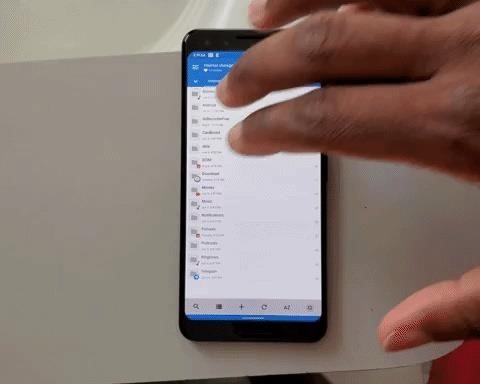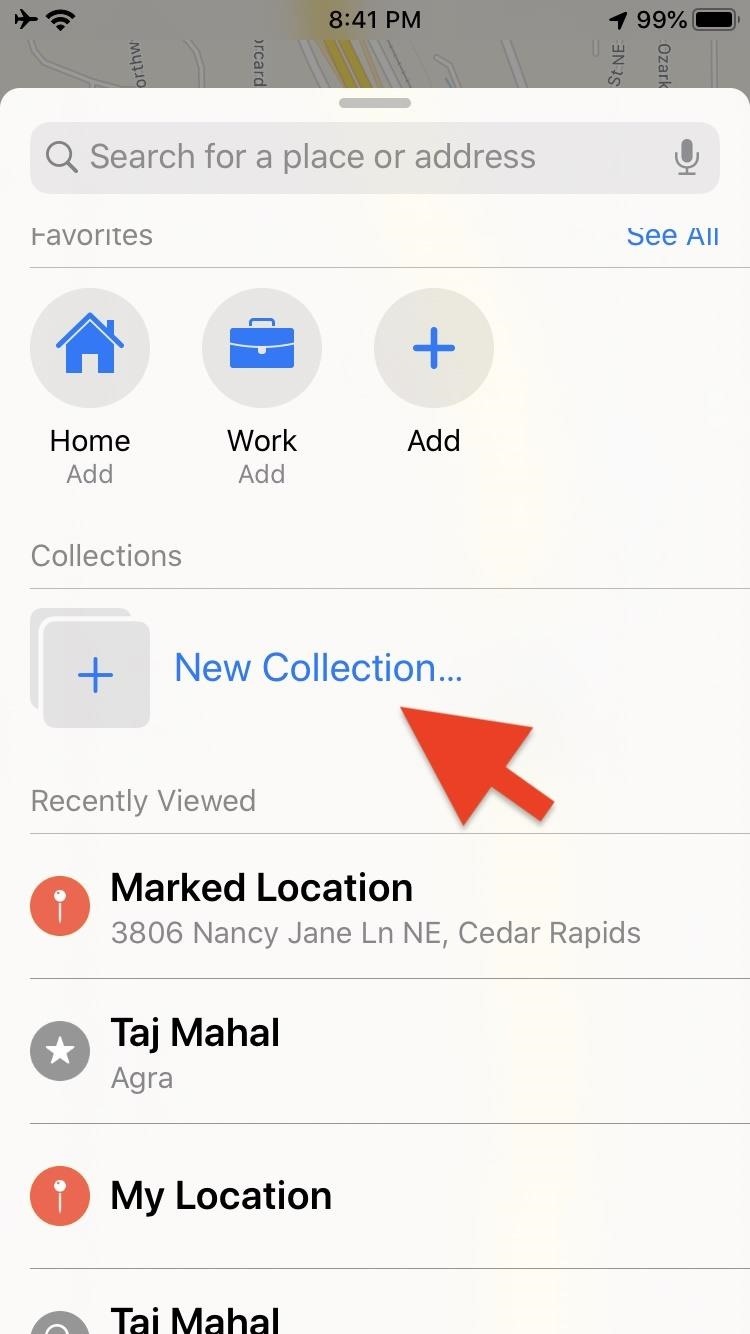
Accelerate EJB 2.0 development with EJBGen
Simplify development and maintenance in your EJB CMP 2.0 model
Developers who have worked with Enterprise JavaBeans (EJB) technology since its inception have experienced the hassle of the EJB development lifecycle. When I started to work with EJB 1.1 containers, I had to maintain classes and interfaces, usually using the Business Interface pattern to spot errors at compile time. I even had to manually create, edit, and maintain the XML deployment descriptors. In addition to being bug-prone, those steps usually delayed my development process.
Since then, the implementation of various projects has eased the EJB development process by automatically generating the deployment descriptors and remote, home, and local interfaces — based on information provided by the bean class (that which implements javax.ejb.SessionBean or javax.ejb.EntityBean).
In this article, I will present EJB expert Cedric Beust’s EJBGen tool. EJBGen limits your code editing to just one file, the bean class, which you annotate with javadoc tags. EJBGen, which is basically a doclet, parses your entity bean source file and generates the remote, home, and local interfaces for you.
EJBGen, doclet, and javadoc explained
As a Java developer, you certainly know javadoc, the JDK tool that lets you generate some HTML documentation based on comments you embed in your source code.
Javadoc uses the Doclet API to specify the content and format of its output. Sun Microsystems provides a default doclet that outputs HTML documentation. That doclet is composed of the classes in the com.sun.tools.doclets, com.sun.tools.doclets.standard, and com.sun.tools.doclets.standard.tags packages. The default doclet is used unless you select the javadoc’s -doclet option. However, you can write your own doclet for enhanced functionality.
EJBGen is a doclet that outputs Java source code (local, remote, home interfaces) and XML deployment descriptors (ejb-jar.xml). In addition, EJBGen can generate proprietary deployment descriptors, weblogic-cmp-rdbms-jar.xml and weblogic-ejb-jar.xml, for BEA WebLogic 6.1.
EJBGen is easy to use because:
- You can quickly implement a large schema and entity bean relationships in just a few days
- You maintain just one class, the bean class
- You no longer manually maintain XML deployment descriptors
To show how to use EJBGen, I implemented an example from the EJB 2.0 specification, section 10.3.12: “An Order Entity Bean that Has Relationships with Line Items and Customers.”
If you’re new to EJB, I strongly suggest you read Chapter 10 of the EJB 2.0 specification: “Entity Bean Component Contract for Container-Managed Persistence.”
Entity bean CMP 2.0
I don’t intend to give you an in-depth presentation on entity beans; that would exceed the scope of this article. However, I would like to outline some of the many features and advantages that container-managed persistence (CMP) 2.0 can bring to your projects:
- An entity bean CMP class is small and maintainable
- The container generates the SQL code for persistence and finder queries, based on your portable EJBQL queries
- With a 2.0-compliant container, you can define relationships between entity beans (one-to-one, one-to-many, and many-to-many) and let the container manage these relations
- The container implements lazy loading techniques and other performance tricks
- You can focus on the business code, rather than the technical infrastructure
- You are not restricted to one vendor
Obviously, the EJB specification is not perfect. Some people were turned away by entity bean CMP in the EJB 1.1 specification, so they disregard it in EJB 2.0. However, if you’re one of those people, you should reconsider your position and see how much this technology has improved.
Moreover, the move to the EJB 2.0 CMP model will protect your investment. By adopting CMP, you minimize the move to next-generation, specification-compliant containers; you also allow the container to regenerate the code behind the scenes, and EJBGen to automatically produce specification-compliant XML deployment descriptors. You therefore automatically take advantage of container improvements. Exciting updates, especially on the security side, are currently being defined for the EJB 2.1 and J2EE (Java 2 Platform, Enterprise Edition) 1.4 specifications. (See Java Specification Requests JSR 151 and JSR 153.)
Okay, I’ll stop preaching; now let me prove it.
The example
EJB 2.0 provides some sample code to illustrate the relationships and local interface concepts in the EJB 2.0 CMP model. The section 10.3.12 describes this example as an:
…Order entity bean with relationships to line items and customers, which are other entity beans within the same local scope.
Productis indirectly related toOrderby means of the relationship betweenLineItemandProduct.
We will simply implement this example. I’ve tested the source code for this article on the Win2K platform with the following tools:
- BEA WebLogic Server 6.1
- Microsoft MS SQL Server
- Inprise JBuilder Personal
- Sun Microsystems JDK 1.3.1
After a short introduction to relationships, we will create the tables in the database that represent Order, LineItem, Customer, Product, and Address. Steps 1 and 2 describe how to implement your entity beans without relationships using EJBGen. Step 3 defines those relationships. As a bonus, I will provide an EJB 2.0 business method. This business method adds a LineItem to an Order and demonstrates the use of value objects and local interfaces.
Step 1: Create the tables in your database
To understand how to create your database tables, you must first understand how the EJB 2.0 model creates relationships and the implication of those relationships on the tables. For beginners, I recommend you develop the entity beans without relationships, and then add the relationships once the beans have been unit tested. Obviously, the more you gain experience with the 2.0 model, the more easily you can develop the beans with their relationships from the start.
The following list describes the relationship types and their physical mappings:
-
One-to-one relationship: This relationship involves a physical mapping from a foreign key in one bean to the primary key in another bean. A primary key uniquely identifies a piece of data. The foreign key creates an association between the tables (a one-to-one, one-to-many, or many-to-many association), and therefore, an association between objects through container-managed relationship (CMR) fields.
-
One-to-many relationship: This relationship involves a physical mapping from a foreign key in one bean to the primary key in another bean (like the one-to-one relationship). The constraint: the foreign key is always contained in the table that occupies the relationship’s many sides. An
Ordercan have multipleLineItems. The foreign key is in theLineItemtable and references the primary key in theOrdertable. - Many-to-many relationship: This relationship involves a physical mapping to a join table used in the RDBMS (relational database management system). Each row in this join table contains two foreign keys that map to the primary keys of the relationship entities.
|
The data physical view
The following diagram represents the Order, Customer, LineItem, Product, and Address tables, plus the relationships between them.
The proceeding tables describe for each column its key type (primary or not; auto means the database increases the integer value — the key increments automatically when a record is inserted), its name, its data type (String, Integer, and so on), and whether or not it allows the null type. A blank cell (-) means that the key type is neither primary nor foreign. Each table has its own corresponding bean class implementation (for the Order table, there is a corresponding OrderBean entity CMP bean, for example).

An Order can have only one Customer, but a Customer can have multiple Orders. An Order can have multiple LineItems, with a minimum of one LineItem per Order. The Order table defines the columns shown in Table 1.
Table 1. Order table
|
A Customer can have zero or more Orders. The Customer table defines the columns shown in Table 2.
Table 2. Customer table
|
A Product can have multiple LineItems. The Product table defines the columns shown in Table 3.
Table 3. Product table
|
A LineItem can have only one Order and one Product. The LineItem table defines the columns shown in Table 4.
Table 4. LineItem table
|
The Address table defines the columns shown in Table 5.
Table 5. Address table
|
You can download the DDL (data description language) script from the Resources section to create the schema in your database.
Step 2: Write the CMP entity beans without relationships
This step is important, but not mandatory. Developing the beans without the relationships is a simple pragmatic approach I usually take in the development process. Testing the basic getters and setters is easier without the relationships. This would be the first step in testing your beans, prior to testing the relationships. As you get used to the EJB 2.0 model, you can begin to merge Steps 2 and 3.
I will focus on the Order table that has a one-to-many relationship with LineItemCustomer. I will introduce a few simple EJBGen tags.
Again, remember EJBGen’s main advantage here: we only work on the bean class; EJBGen generates the rest. The bean class without the relationships looks like this:
package org.jyperion.order;
import org.jyperion.framework.AbstractEntityBean;
import org.jyperion.framework.PrimaryKeyGenerator;
/**
* OrderEntityBean
*
* @ejbgen:entity
* ejb-name = OrderBean
* table-name = OrderBean
* data-source-name = jdbc/JavaWorldPool
* prim-key-class = java.lang.String
* default-transaction = Required
*
* @ejbgen:jndi-name
* remote = OrderBean
* local = OrderBeanLocal
*
* @ejbgen:finder
* signature = "Collection findAllOrders()"
* ejb-ql = "SELECT OBJECT(O) FROM OrderBean O"
* transaction-attribute = Required
*
* @ejbgen:finder
* signature = "Collection findAllPendingOrders()"
* ejb-ql = "SELECT OBJECT(O) FROM OrderBean O WHERE O.status="PENDING""
* transaction-attribute = Required
*
* @author Thierry Janaudy
* @date 12 November 2001
* @version 1.0
*/
public abstract class OrderBean extends AbstractEntityBean {
///////////////////////////////////////////////////////
// Container Managed Persistent Fields //
///////////////////////////////////////////////////////
/**
* @ejbgen:cmp-field column = orderid
* @ejbgen:primkey-field
*/
public abstract String getOrderId();
public abstract void setOrderId(String orderid);
/**
* @ejbgen:cmp-field column = status
* @ejbgen:remote-method
* @ejbgen:local-method
*/
public abstract String getStatus();
public abstract void setStatus(String status);
/**
* @ejbgen:cmp-field column = creditApproved
* @ejbgen:remote-method
* @ejbgen:local-method
*/
public abstract Boolean getCreditApproved();
public abstract void setCreditApproved(Boolean creditApproved);
///////////////////////////////////////////////////////
// Container Managed Relation Fields //
///////////////////////////////////////////////////////
///////////////////////////////////////////////////////
// Create methods //
///////////////////////////////////////////////////////
public String ejbCreate(String status) {
this.setOrderId(PrimaryKeyGenerator.getUUID(this));
return null;
}
public void ejbPostCreate(String status) {
this.setStatus(status);
}
///////////////////////////////////////////////////////
// Overridden methods //
///////////////////////////////////////////////////////
///////////////////////////////////////////////////////
// Business methods //
///////////////////////////////////////////////////////
}
This bean class is part of the org.jyperion.order package that you can find in the source code.
As you can see, the Javadoc is pretty straightforward:
- The
@ejbgen:entitytag defines the table name, the entity bean name, the data source, the default transaction, and so on - The
@ejbgen:jndi-nametag defines the JNDI (Java Naming and Directory Interface) name for lookup of the remote and local interfaces - The
@ejbgen:findertag lets you define finder queries for your entity bean - The
@ejbgen:cmp-fieldtag defines a CMP field - The
@ejbgen:primkey-fieldoptional tag tells whether or not the CMP field is a primary key
You just have to declare the getters and setters for the CMP fields and the different ejbCreate() and ejbPostCreate() methods.
At this point, we’ve only implemented the bean class. Now we need to generate all the interfaces as well as the deployment descriptors. For this, you just need to run the EJBGen doclet on your source.
Run the doclet
You use the following command line to generate the interfaces and XML deployment descriptors:
javadoc -classpath %BEA_HOME%libweblogic.jar;..sources -docletpath
..libejbgen.jar;..sources -doclet EJBGen orgjyperionorderOrderBean.java
EJBGen generates:
LocalOrder.javaOrder.javaOrderHome.javaOrderLocalHome.javaejb-jar.xmlweblogic-ejb-jar.xmlweblogic-cmp-rdbms-jar.xml
Now you just package those files in a jar file, and then run ejbc on it.
In my development environment, I use Apache Ant for a multiplatform build tool. You can use EJBGen within your Ant tasks. You can refer to the EJBGen documentation for this, but here is a quick tip:
<target name="BuildEjbDescriptors" depends="prepare">
<javadoc sourcefiles="${src}/*Bean.java" sourcepath="${src}" destdir="${src}" doclet="EJBGen" docletpath="../../ejbgen.jar" />
</target>
Step 3: Entity relationships
Let’s look at the OrderBean relationships. An OrderBean can have only one CustomerBean, but a CustomerBean can have multiple OrderBeans. This is a one-to-many relationship. Similarly, an OrderBean can have multiple LineItemBeans, but a LineItemBean can have only one OrderBean. (In the source code, you can see that LineItemBean defines three relationships: a many-to-one with OrderBean, a many-to-one with ProductBean, and a one-to-one with AddressBean.)
Defining these relationships by hand — for example, editing the XML deployment descriptors — would be a hassle. EJBGen lets you generate them by just adding a specific tag, the @ejbgen:relation tag.
The Javadoc for OrderBean becomes:
/**
* OrderBean
*
* @ejbgen:entity
* ejb-name = OrderBean
* table-name = TOrder
* data-source-name = jdbc/JavaWorldPool
* prim-key-class = java.lang.String
* default-transaction = Required
*
* @ejbgen:jndi-name
* remote = OrderBean
* local = OrderBeanLocal
*
* @ejbgen:finder
* signature = "Collection findAllOrders()"
* ejb-ql = "SELECT OBJECT(O) FROM OrderBean O"
* transaction-attribute = Required
*
* @ejbgen:finder
* signature = "Collection findAllPendingOrders()"
* ejb-ql = "SELECT OBJECT(O) FROM OrderBean O WHERE O.status="PENDING""
* transaction-attribute = Required
*
* @ejbgen:relation
* multiplicity = many
* name = CustomerCanHaveMultipleOrders
* target-ejb = OrderBean
* fk-column = customerfk
* cmr-field = customer
*
* @ejbgen:relation
* multiplicity = one
* name = OrderCanHaveMultipleLineItems
* target-ejb = OrderBean
* cmr-field = lineItems
*
* @author Thierry Janaudy
* @date 12 November 2001
* @version 1.0
*/
In the code above, we added two new
@ejbgen:relation
tags. The first one says that a
Customer
can have multiple orders, which translates into the relation name
CustomerCanHaveMultipleOrders
. You must have a relation defined with the same relation name in the
Customer
class. This relation’s target is the
OrderBean
, which uses the foreign key
customerfk
defined in the
Order
table to manage this relation. (
customerfk
links to the
Customer
table’s primary key.) In the
OrderBean
, a CMR is defined for the bean developer to manipulate the
Customer
bean from his/her business code and to navigate through the relationships for finder queries. In the
Customer
bean, you will find:
* @ejbgen:relation
* multiplicity = one
* name = CustomerCanHaveMultipleOrders
* target-ejb = CustomerBean
* cmr-field = orders
To programmatically use these relationships, you have to define the CMR accessors in the Order class:
/**
* @ejbgen:cmr-field
* @ejbgen:local-method
*/
public abstract LocalCustomer getCustomer();
/**
* @ejbgen:local-method
*/
public abstract void setCustomer(LocalCustomer customer);
And in the Customer class:
/**
* @ejbgen:cmr-field
* @ejbgen:local-method
*/
public abstract Collection getOrders();
/**
* @ejbgen:local-method
*/
public abstract void setOrders(Collection orders);
|
The second @ejbgen:relation tag says that an Order can have multiple LineItems, which translates into the relation name OrderCanHaveMultipleLineItems.
LineItemBean defines:
* @ejbgen:relation
* multiplicity = many
* name = OrderCanHaveMultipleLineItems
* target-ejb = LineItemBean
* fk-column = orderfk
* cmr-field = order
The CMR accessors for Order are:
/**
* @ejbgen:cmr-field
* @ejbgen:local-method
*/
public abstract Collection getLineItems();
/**
* @ejbgen:local-method
*/
public abstract void setLineItems(Collection lineItems);
and for
LineItem
:
/**
* @ejbgen:cmr-field
* @ejbgen:local-method
*/
public abstract LocalOrder getOrder();
/**
* @ejbgen:local-method
*/
public abstract void setOrder(LocalOrder order);
OrderBean business method: addLineItem()
The EJB 2.0 specification provides a business method called addLineItem(). According to the specification, this method “creates a LineItem object and adds it to the persistent-managed relationship.” I slightly modified the method signature for simplicity’s sake:
The method signature is:
public void addLineItem(String productId, Integer quantity, AddressVO addressValueObject)
This method will:
- Create a new
LineItemobject - Find the product using the
productIdand get its local interface - Assign the relationship product to the
LineItem(using a CMR field) - Set the fields Tax, Status, Quantity, Shipment Date (using a CMP field)
- If
Addressis valid, create it and assign the relationship address to theLineItem(using a CMR field) - To the
Order‘sLineItemcollection, add the created line item
This translates to:
/**
* Adds a LineItem to the Order
* @param productId
* @param quantity
* @param addressValueObject
*
* @ejbgen:remote-method
*/
public void addLineItem(String productId, Integer quantity, AddressVO addressValueObject)
throws RemoteException {
try {
//1. Create a new LineItem object
Context context = new InitialContext();
LineItemLocalHome localItemHome = (LineItemLocalHome)context.lookup("LineItemBeanLocal");
LocalLineItem localItem = localItemHome.create();
//2. Find the product using the productId and get its local interface
ProductLocalHome localProductHome = (ProductLocalHome)context.lookup("ProductBeanLocal");
LocalProduct localProduct = localProductHome.findByPrimaryKey(productId);
//3. Assign the relationship product to the LineItem (CMR)
localItem.setProduct(localProduct);
//4. Set the fields Tax, Status, Quantity, Shipment Date (CMP)
localItem.setQuantity(quantity);
localItem.setShipmentdate(new java.sql.Date(System.currentTimeMillis()));
localItem.setStatus(OrderBean.UNSHIPPED);
localItem.setTax(OrderUtil.calculateTax(localProduct.getPrice(), quantity, addressValueObject));
//5. If Address is valid, create it and assign the relationship address to the LineItem (CMR)
if (addressValueObject.isValid()) {
context = new InitialContext();
AddressLocalHome localAddressHome = (AddressLocalHome)context.lookup("AddressBeanLocal");
LocalAddress localAddress = localAddressHome.create(addressValueObject.street1,
addressValueObject.street2, addressValueObject.postcode, addressValueObject.city,
addressValueObject.country);
localItem.setAddress(localAddress);
} else {
throw new RemoteException("Address is not valid!");
}
//6. To the Order's LineItem collection, add the created line item
this.getLineItems().add(localItem);
} catch(Throwable t) {
throw new RemoteException(t.getMessage(), t);
}
}
That’s it!
Quick start
In the
, you will find:
- The source code in the sources folder
- The batches in the bin folder
- The SQL script files to create the database in the db folder
- EJBGen in the lib folder
To try EJBGen easily and quickly, just:
- Create the schema in the database
- Invoke
JyperionClientin the packageorg.jyperion.clientto create theCustomers andProducts - Invoke
JyperionClientto test the finders and call the business methodaddLineItem()
The
DIY.txt
file in
ejbgen.zip
details the steps for using EJBGen.
Discover what you’re missing
In this article, you learned:
- To easily accelerate your EJB 2.0 development using EJBGen
- To simplify maintenance by maintaining just the bean class
- EJBGen can generate all the interfaces and XML deployment descriptors for you
- The advantages of the EJB CMP 2.0 model
EJB 2.0 is great technology. Tools such as EJBGen and XDoclet (an extended Javadoc doclet engine from SourceForge) can speed your development if you work with WebLogic Server 6.1 or JBoss with MVCSoft. I was able to complete the code above (plus client code, database creation, testing, deployment) in just two nights. EJBGen helps you focus on the business logic rather than the technical infrastructure. You don’t believe me? Try it!




